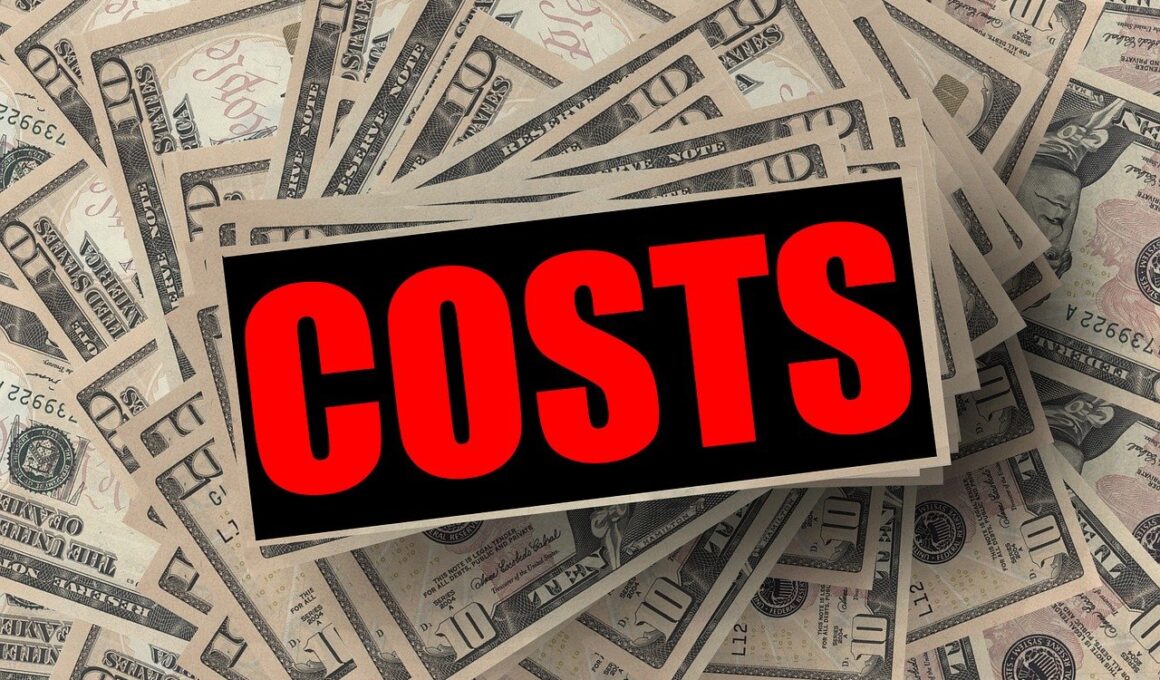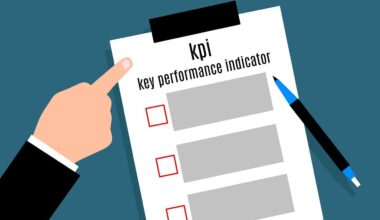Sunk Costs vs Relevant Costs: What You Need to Know
Understanding the difference between sunk costs and relevant costs is vital for effective decision-making in business. Sunk costs refer to expenses that have already been incurred and cannot be recovered. These costs should not influence future decisions. For instance, if a company spends a significant amount on a project that is no longer viable, the expenditures are considered sunk costs. In contrast, relevant costs are those costs that will directly impact future decisions and outcomes. They are essentially avoidable costs that are pertinent to a particular management decision. When evaluating a prospective project, businesses need to focus on costs that can be altered or avoided rather than on those that cannot. Ignoring sunk costs helps managers make clear-headed decisions, as they avoid the fallacy of throwing good money after bad. To ensure optimal decision-making, organizations must aim to segregate these costs effectively. This involves recognizing that past investments should not dictate future business strategies or financial commitments that ultimately do not bring additional value.
Typically, relevant costs include costs that will be incurred or avoided, depending on the decision made. For example, if a company is deciding whether to continue or shut down a division, the future operating costs and potential profits from the division are relevant costs. On the other hand, any overhead costs already paid would qualify as sunk costs. To aid decision-making, firms may use relevant costing principles to analyze which costs should be factored into their calculations. This approach will streamline the analysis by avoiding irrelevant data, allowing companies to make decisions based solely on their potential for deriving profit and minimizing losses. It fundamentally emphasizes the importance of focusing on ongoing and future cash flows rather than past expenditures. When businesses can categorize expenses accurately, they can make more informed decisions that align with their strategic goals. Decisions such as continuing or terminating a project must hinge on these relevant costs because they better reflect the company’s future rather than its past, ensuring longevity and profitability.
Examples of Sunk Costs
Several real-world scenarios illustrate the concept of sunk costs. For instance, consider a company that spends $500,000 on market research for a new product that ultimately fails during development. The market research expenses have already been spent and cannot be recovered; they will therefore remain as sunk costs. Similarly, if a business invests in equipment that becomes obsolete but has already been paid for, those costs also become sunk. Despite the money spent, decisions must be made based on whether the equipment can still be used to generate revenue in the future rather than focusing on what has already been lost. Recognizing these sunk costs helps prevent emotional decision-making where businesses continue to invest in unfruitful projects simply because of prior financial commitments. An essential point to note is that emotional attachment to past investments must be challenged to maintain or improve financial health. Thus, decision-makers must ensure that they assess options and their implications without being bound by historical expenses.
Relevant costs provide managers with concrete data that influence future performance and profitability. For instance, if a firm assesses whether to manufacture a product in-house versus outsourcing production, understanding both direct costs and variable costs associated with in-house production plays a crucial role. These prospective costs will guide managers in understanding how switching production methods will affect their future expenses. Decisions such as these significantly impact overall profitability and should be made without considering predecessors tied to established costs. Essentially, relevant costs will include considerations of future cash flows, labor costs, and materials, directly connected to the operational decision at hand. Assessing costs related to future actions ensures businesses only spend resources that can yield a positive return on investment. Likewise, managers can analyze various alternatives while ignoring sunk costs to identify the best path forward. Making use of relevant costs allows firms to navigate the market landscape more efficiently, ultimately leading to sustainable growth and success.
Dangers of Ignoring Relevant Costs
Ignoring relevant costs while making business decisions can lead to severe financial miscalculations. Companies might find themselves over-relying on previous investments or failing to recognize the impact of current choices on their future. These dangers can often stem from the misconception that past expenditures need to be recouped, leading a business to allocate additional resources incorrectly. For instance, a firm that has invested substantially in a struggling project may decide to continue financing it, believing they need to ‘make back’ what they spent, instead of considering whether the project will generate new value. This decision, influenced by sunk costs rather than relevant analysis, can culminate in significant financial losses. Employing a relevant costing approach can help mitigate such risks as firms focus on future payoffs rather than historical losses. Ultimately, businesses will enhance their decision-making frameworks by emphasizing costs interconnected with future operational outcomes while sidelining any emotional ties to past expenditures. The quest for profit becomes clearer through the lens of relevant costs.
In conclusion, the distinction between sunk costs and relevant costs is not just an academic exercise; it has practical implications in real-world business decisions. For sound financial health, organizations must account for their sunk costs while ensuring that they prioritize relevant costs during decision-making processes. Holding onto sunk costs can cloud judgement and lead to flawed strategic choices. This underscores the necessity for robust financial training and regular reminders for decision-makers to remain objective in their assessments. Businesses that master the art of differentiating these costs will likely navigate their finances more confidently and will be more adaptive to market changes. Important lessons can be drawn from both successful and failed projects, emphasizing financial prudence over emotional investments tied to previous expenditures. The road to successful decision-making requires a clear understanding of costs that actually impact future decisions. Emphasizing relevant costs will provide businesses with the framework necessary to thrive in competitive markets, ultimately paving the way for sustained growth and success.
Best Practices for Evaluating Costs
To maximize efficiency in decision-making, companies should adopt best practices for evaluating both sunk and relevant costs in each project or operational review. One effective approach is implementing a systematic framework to assess all expenditures without bias. This entails establishing a clear process for identifying and documenting all relevant costs that will assist decision makers. Additionally, fostering a culture that avoids the temptation to consider sunk costs will empower managers to adopt a forward-thinking mindset. Training sessions and workshops can also equip teams with the necessary tools and knowledge to navigate relevant costing methods effectively. Regular reviews of ongoing projects against expected outcomes can uncover potential misalignments and help redirect resources where they are most effective. Companies should also utilize software tools that enhance visibility into cost structures to facilitate better analysis and reporting. By continually refining these practices, firms can embrace a proactive stance towards their operational costs, ultimately leading to sound strategic decisions based on data rather than biases tied to previous expenditures.
In summary, stellar decision-making in business relies heavily on the correct recognition of cost classifications. Understanding the contrast between sunk costs and relevant costs empowers managers to make informed choices that enhance strategic opportunities and minimize wasteful expenditures. Companies can improve performance through improved cost planning, preparation, and thoughtful evaluations of options available to them. This also serves to create a stronger organizational culture where effective decision-making becomes the norm. Over time, by focusing on facts surrounding ongoing costs versus those that have been entirely expended, businesses will cultivate a mentality that prioritizes future gains rather than past losses. The lessons learned from unsuccessful endeavors will enrich the organizational knowledge base, providing a reservoir of insights that can inform new projects and strategies. Ultimately, the road ahead calls for financial acuity where decisions are based on solid analyses grounded in relevant costing principles. Thus, developing an analytical approach towards costs enables firms to steer their projects towards successful outcomes, ensuring that their financial health is sustained and continually improved.


